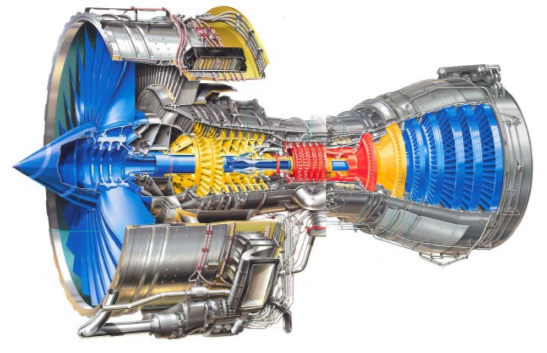Engine Direct Maintenance Cost
The Cost of Engine Shop Maintenance is known as the Direct Maintenance Cost (DMC)
With modern condition monitoring processes and the availability of Engine Condition Trend Monitoring (ECTM) software, it is possible to be far more “accurate” in assessing the operational costs of Engine Maintenance.
Additionally the introduction of Condition Monitored Engine Maintenance has resulted in the reduction of the hard time maintenance requirements.
A positive outcome of the monitoring of key operational parameters include Exhaust Gas Temperature (EGT), fuel flow, vibration, oil consumption, and rotor speed is the ability to remain “on wing” for longer periods.
Considering Engine Life Limited Parts (LLP’s)
A primary driver for determining a LLP is considering parts which may be subject to uncontained failure – The control of this is by introducing Flight Cycles Control for Critical LLP’s
Some engines may additionally contain static LLPs. not classified to be critical rotating parts the failure of static LLP could still create a hazard.
Typically cycle limits range from 15.000 to 30,000 cycles consisting of disks, shafts, spools & seals
The use of the engine / Long Haul OPS versus Short Haul OPS is a significant factor related to LLP’s as flight times may vary from less than 1 hour to more than 10 hours
Engine Modules
Modern Aircraft Engines are built from a number of separate modules or assemblies, to ensure the management of continuing airworthiness “back to birth” and maintenance task requirements.
Modular Construction also permits more effective maintenance benefits driven by a decrease in the number of spares holding and maintenance turnaround times
Primary Modules for a 2 spool engine typically consist of the following
Fan / Low Pressure Compressor (LPC) consist of the fan blades, fan disk, and compressor case.
High Pressure Compressor (HPC) – The HPC module is made up of a series of rotor and stator assemblies whose main function is to raise the pressure of the air supplied to the combustor.
Combustor – The combustor is where fuel is added to the cycle to create thermal energy.
A combustor typically consists of the inner & outer casings, fuel nozzles, and the high pressure nozzle guide vanes.
High Pressure Turbine (HPT) – The HPT module is made up of the HPT rotor and nozzle guide vane assemblies, which act to extract the combustion thermal energy for driving the high-pressure compressor and accessory gearbox.
Low Pressure Turbine (LPT) – LPT components include the LPT rotors, LPT nozzle stator case and turbine rear frame. The LPT extracts the remaining combustion thermal energy to drive the fan and low-pressure compressor rotor assembly.
Accessory Drive – The accessory drive section is usually attached to the engine core or fan case to drive the basic engine & aircraft accessories (e.g. generators and hydraulic pumps.
Next Steps
Follow this link to our Library to find & Download related documents for Free
Sofema Aviation Services offers EASA Compliant Regulatory and Vocational Training including Engine Condition Trend Monitoring. For details please see www.sassofia.com or email team@sassofia.com




